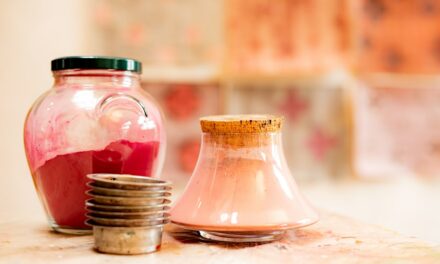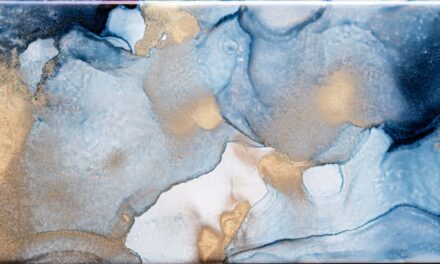Ceramic glazing is an intricate and fascinating aspect of pottery that transforms raw clay into vibrant, functional art. The process of glazing not only enhances the aesthetic appeal of ceramic pieces but also serves practical purposes, such as making them waterproof and more durable. As artists delve into the world of ceramics, understanding the various glazing techniques becomes essential for achieving desired results.
This article aims to explore the multifaceted realm of ceramic glazing, providing insights into its fundamental principles, application methods, and the creative possibilities that arise from layering and special effects. The journey into ceramic glazing is as much about experimentation as it is about technique. Each glaze possesses unique characteristics influenced by its composition, application method, and firing conditions.
Artists often find themselves captivated by the endless possibilities that arise from combining different glazes, creating textures, and employing various firing techniques. This exploration not only enriches their artistic practice but also deepens their understanding of the materials they work with, allowing for a more profound connection to their craft.
Summary
- Ceramic glazing techniques are essential for adding colour, texture, and depth to pottery and ceramics.
- Understanding the basics of glazing, including the composition of glazes and firing temperatures, is crucial for successful results.
- Different glaze application methods, such as dipping, pouring, and spraying, can create unique effects on ceramics.
- Layering techniques can be used to create depth and texture in glazes, adding visual interest to the finished piece.
- Underglazes and overglazes can be used to achieve colourful and vibrant effects on ceramics, allowing for endless creative possibilities.
Understanding the Basics of Glazing
The Importance of Understanding Glaze Chemistry
Understanding the chemistry behind glazes is crucial for artists who wish to manipulate colour and texture effectively. The application of glaze can significantly alter the final appearance of a ceramic piece. Factors such as the type of clay body used, the thickness of the glaze application, and the firing temperature all play pivotal roles in determining the outcome.
The Impact of Firing Temperature on Glaze Appearance
For instance, a glaze that appears vibrant and glossy at a high temperature may turn dull or muted if fired at a lower temperature. Therefore, artists must carefully consider these variables when selecting glazes and planning their firing schedules to achieve their desired results.
Achieving Desired Results through Careful Planning
Exploring Different Glaze Application Methods
There are several methods for applying glaze to ceramics, each offering distinct advantages and creative possibilities. The most common techniques include dipping, brushing, pouring, and spraying. Dipping involves submerging the ceramic piece into a container filled with glaze, allowing for an even coating that can be adjusted by varying the duration of immersion.
This method is particularly effective for achieving consistent coverage on larger pieces. Brushing is another popular technique that allows for greater control over glaze application. Artists can create intricate designs or patterns by applying glaze with a brush, enabling them to experiment with layering colours and textures.
Pouring offers a unique approach where glaze is poured over the piece, creating organic patterns as it flows and interacts with the surface. Lastly, spraying provides a fine mist of glaze that can create soft transitions between colours and subtle gradients. Each method presents its own set of challenges and rewards, encouraging artists to explore and refine their skills.
Creating Depth and Texture with Layering Techniques
Layering glazes is an advanced technique that can add depth and complexity to ceramic pieces. By applying multiple layers of different glazes, artists can create rich visual effects that enhance the overall design. The interplay between layers can result in unexpected colour combinations and textures that elevate a piece from ordinary to extraordinary.
However, successful layering requires careful consideration of compatibility between glazes, as some may react unfavourably when combined. To achieve depth through layering, artists often start with a base layer that serves as a foundation for subsequent applications. This base layer can be a solid colour or a textured glaze that provides an interesting backdrop for additional layers.
Once the base layer has dried, artists can apply additional glazes using various techniques such as brushing or spraying. The key is to allow each layer to dry thoroughly before adding the next to prevent unwanted mixing or running. This method not only enhances visual interest but also invites viewers to engage with the piece on multiple levels.
Using Underglazes and Overglazes for Colourful Effects
Underglazes and overglazes are essential tools in a ceramic artist’s repertoire, offering unique opportunities for colour application and design. Underglazes are typically applied to bisque-fired clay before the final glaze is added, allowing artists to paint intricate designs or patterns directly onto the surface. These pigments retain their vibrancy even after being covered with a clear glaze, making them ideal for detailed work.
Overglazes, on the other hand, are applied on top of an already glazed surface and often require a second firing to achieve their final appearance. These glazes can add additional colour or effects such as metallic finishes or glossiness to an already glazed piece. The combination of underglazes and overglazes allows artists to create complex designs that incorporate both detailed imagery and vibrant colour palettes.
By mastering these techniques, ceramicists can push the boundaries of traditional glazing and explore new avenues for artistic expression.
Incorporating Special Effects and Techniques for Unique Finishes
The world of ceramic glazing is replete with special effects techniques that can transform ordinary pieces into extraordinary works of art. Techniques such as sgraffito, where designs are scratched into a layer of slip or underglaze before firing, allow for intricate patterns that reveal contrasting colours beneath. Another popular method is using wax resist, where wax is applied to areas where the artist wishes to prevent glaze from adhering, creating striking negative spaces in the final piece.
Additionally, artists can experiment with various additives such as oxides or stains to create unique finishes. For instance, adding iron oxide can produce earthy tones and textures reminiscent of natural clay bodies, while cobalt oxide can yield vibrant blues. The use of these materials opens up a world of creative possibilities, enabling artists to develop their signature styles through experimentation and innovation.
Firing and Finishing Techniques for Vibrant Glazes
Firing is perhaps one of the most critical stages in the glazing process, as it determines how glazes will react and ultimately appear on finished pieces. The temperature at which ceramics are fired can significantly influence glaze behaviour; high-fire glazes often yield more vibrant colours and glossy finishes compared to low-fire alternatives. Understanding kiln atmospheres—oxidation versus reduction—also plays a vital role in achieving specific effects; for example, reduction firing can produce stunning variations in colour due to changes in oxygen levels during firing.
Post-firing techniques such as polishing or applying additional surface treatments can further enhance the vibrancy of glazes. For instance, burnishing can create a smooth finish that reflects light beautifully, while additional clear glazes can intensify colours and add depth. Artists must consider these finishing techniques carefully to ensure they complement rather than detract from their original vision.
Tips for Successful Glazing and Troubleshooting Common Issues
Achieving successful glazing results often requires patience and practice; however, there are several tips that can help streamline the process and mitigate common issues. First and foremost, thorough preparation is essential—ensuring that surfaces are clean and free from dust or oils will promote better adhesion of glazes. Additionally, testing glazes on small samples before applying them to larger pieces can help identify potential issues with colour or texture.
Common glazing problems include crawling (where glaze pulls away from certain areas), pinholing (small holes appearing in the glaze surface), and uneven coverage. Understanding the causes behind these issues can aid in troubleshooting; for example, crawling may result from applying glaze too thickly or on an improperly prepared surface. By maintaining meticulous records of glaze recipes, application methods, and firing conditions, artists can refine their techniques over time and achieve consistently successful results.
In conclusion, ceramic glazing is a rich field filled with endless possibilities for creativity and expression. By mastering various techniques—from basic applications to advanced layering methods—artists can unlock new dimensions in their work while developing a deeper understanding of materials and processes involved in ceramics. As they navigate this intricate landscape, they not only enhance their artistic practice but also contribute to the ongoing dialogue within the world of ceramics.
If you are interested in exploring different art techniques, you may also enjoy reading about Nerikomi Artistic Technique. This article delves into the intricate process of creating beautiful patterns and designs using coloured clay. Just like ceramic glazing, this technique requires skill and precision to achieve stunning results. Check it out for a fascinating insight into the world of artistic expression.
FAQs
What are ceramic glazing techniques?
Ceramic glazing techniques are methods used to apply a layer of glaze to ceramic pieces in order to add color, depth, and a glossy finish. These techniques can involve various application methods, such as dipping, pouring, spraying, or brushing the glaze onto the ceramic surface.
What are some common ceramic glazing techniques?
Some common ceramic glazing techniques include single firing, double firing, underglaze decoration, overglaze decoration, and various special effects techniques such as marbling, sponging, and layering.
How do ceramic glazing techniques add color and depth to ceramic pieces?
Ceramic glazing techniques add color and depth to ceramic pieces by allowing the glaze to interact with the surface of the ceramic in different ways. This can create variations in color, texture, and opacity, resulting in a more visually interesting and dynamic finished piece.
What are some tips for using ceramic glazing techniques effectively?
Some tips for using ceramic glazing techniques effectively include properly preparing the ceramic surface, experimenting with different application methods and layering techniques, and carefully following firing instructions to ensure the glaze reaches its full potential.
Are there different types of ceramic glazes that can be used with these techniques?
Yes, there are different types of ceramic glazes, including transparent, opaque, matte, and glossy glazes, as well as specialty glazes that produce unique effects such as crackling, crystalline, or metallic finishes. Each type of glaze can be used in combination with various techniques to achieve different results.


